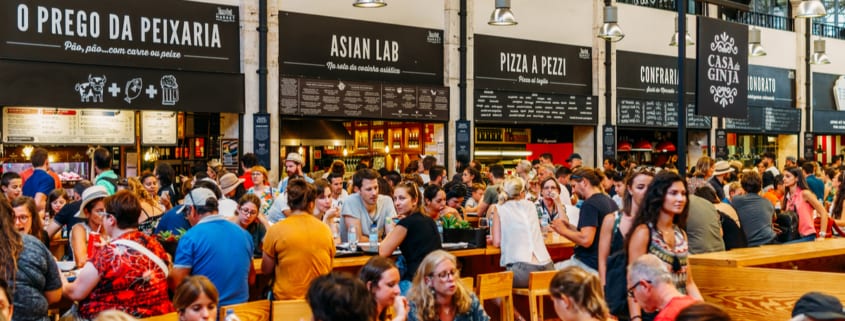An Influx of Food Halls Impacts Urban Renewal
Over the past few years, food-related retail has generated a more aggressive growth in the rate of location expansion than any other retail category. Food halls, a space that accommodates multiple restaurants in a market-style setting, are one type of food-related retail that have contributed to this growth. By the end of 2016, the United States had 35 new food hall projects and it is anticipated that by the end of 2019 there will be about 200 major projects across the United States.
Food halls are expected to appear most heavily in areas with new developments. More specifically, this growth is predicted to target industrial-inspired, mixed-use developments in urban areas.
Keep reading to discover why the expansion of food halls will create urban renewal and how owners and investors should expect to benefit from this trend.
What Do Food Halls Mean for Urban Renewal?
The growth of food halls plays a vital role in the urban renewal of cities and developing areas throughout the United States. Whether large corporate office buildings or multifamily apartments, food halls offer a unique dining and retail experience that drives both people and developmental activities to the area.
High growth cities that are currently undergoing urban renewal such as Denver, Detroit, Austin, and Pittsburgh are each an example of locations that are experiencing the emergence of food halls that are redefining the urban core. Downtown areas in cities that were once losing residents to the suburbs are now seeing a change as more citizens return to city living. As cities continue to evolve and improve their infrastructures, new urban opportunities will continue to emerge. This arrival will increase developers’ ability to capitalize on these areas and result in the construction of more food halls to fuel the “foodie-culture” trend.
Millennials are attracted to larger, urban cities with attractions that allow them to have new experiences. Food halls appeal to this demographic because of their artisanal or gourmet dining options, and the local architectural trends and aesthetics included in the designs. With 44% of Millennials spending their food budget on eating out, and the majority of them living in urban areas, food halls are likely to continue contributing to urban renewal.
How Does This Benefit Owners and Investors?
During a time of daily headlines about closures and bankruptcies in the retail sector, the emergence of food halls has introduced a new concept that is quickly becoming attractive to both commercial real estate owners and investors. The number of small retail tenants in the market today is growing; tenants like these who desire retail locations with only a couple hundred square feet are flocking to food halls. Because food halls are able to demand significantly higher rents with higher yields, more food hall tenants can mean long-term annual income growth for owners and investors.
The low failure rate of food halls is another benefit for owners and investors. Of the hundreds of food halls that have opened across the United States, only three of them have been reported to have failed. This failure rate is substantially lower than that of the 17% of traditional eateries that close within the first year of business. There is also less risk associated with food hall investments since they are composed of several small tenants versus the single tenant associated with a traditional restaurant. The failure of one concept within the food hall is less likely to cause a downfall of the entire project.
What Does This Mean for the Future of Retail?
With tenants ranging from food truck operators to celebrity chefs, food halls are rapidly replacing the once popular food courts once found in shopping malls. Because consumers are increasingly seeking unique and exciting experiences, food halls are able to generate heavy amounts of traffic. The overflow of traffic produced by these dining halls also benefits surrounding retailers. A survey conducted by commercial real estate services firm Jones Lang LaSalle found that 40% of customers will choose a center to shop at solely based on its food options, and retail locations with quality food-and-beverage options are reported to see a 25% increase from their standard amount of transactions.
As the food hall trend in urban areas continues to rise, the retail industry is predicted to undergo an evolution consisting of the revitalization of storefronts and dilapidated shopping centers. Malls are expecting to see a rise from 11% to about 22% in the number of food-related deals that they acquire. Food halls are able to offer an experience that is “largely e-commerce proof”, which will help drive both traffic and the future of retail.











